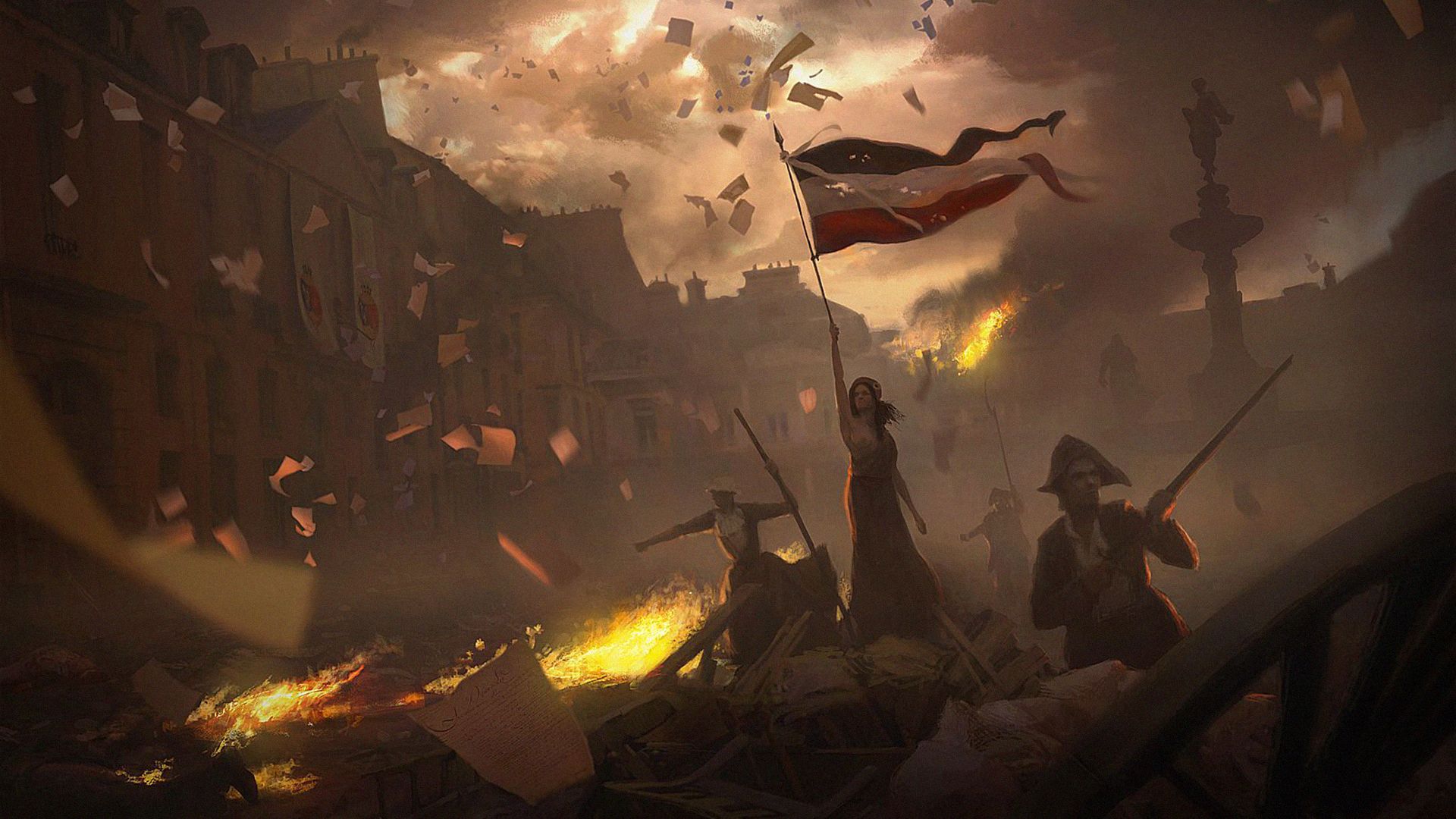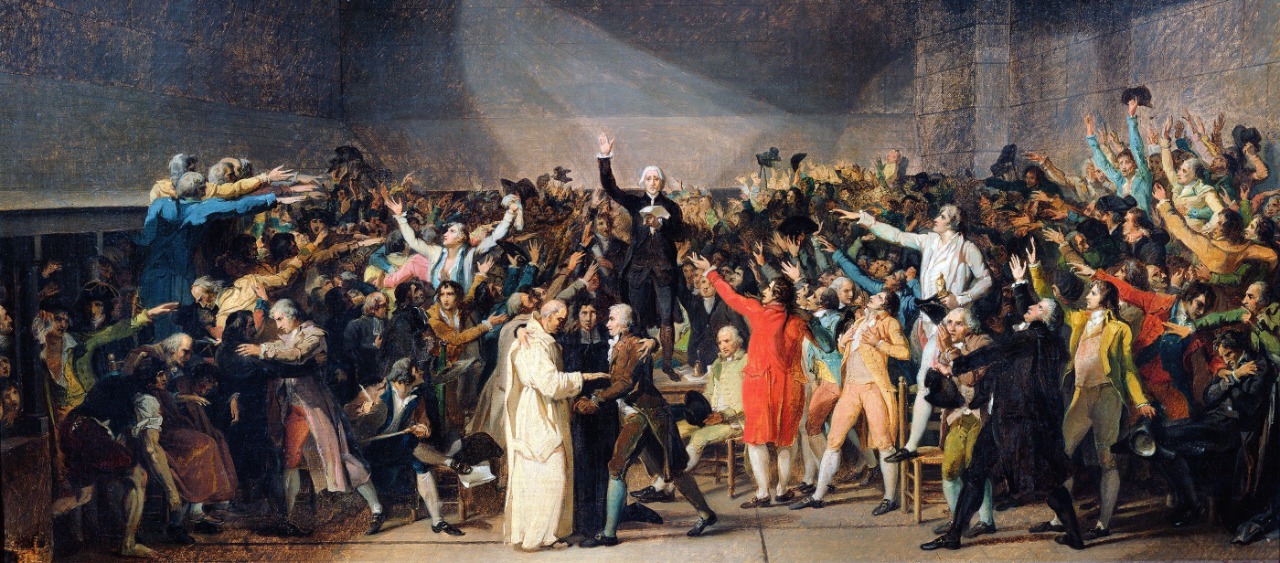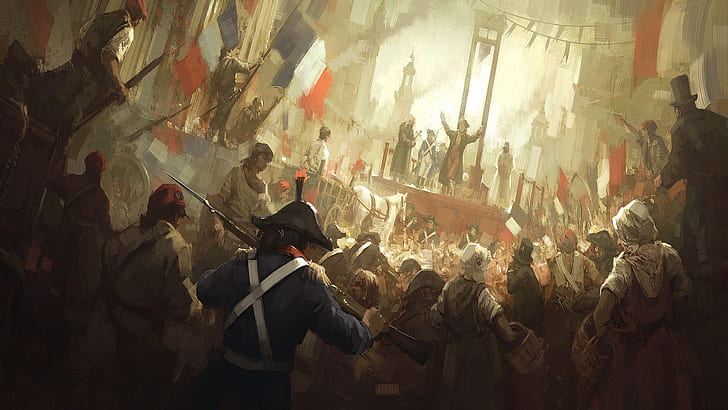- Umang Sagar
- History, Recent article
The French Revolution
Understanding The Roots Of The French Revolution

The French government’s biggest concern in the eighteenth century was the economy. It all started with Louis XIV’s excessive spending and mismanagement of the government. The cost of the French and Indian War, as well as assisting the American colonies to fight Britain, put France’s economy under severe hardship. French debt service and interest accounted for about half of the national budget by 1789.
In the eighteenth century, France’s social structure was also a major issue. The First Estate included Catholic clergy, who controlled between one-tenth and one-fifth of France’s land. The Second Estate was mostly including noblemen. The Third Estate included all non-noble and non-cleric Frenchmen. All types of people found themselves as Third Estate members: peasants, craftsmen, urban poor, middle-class merchants, bankers, and professionals such as doctors and lawyers. If the First and Second Estates’ interests diverged, the Third Estate’s interests and divisions were practically insurmountable. More than their own group’s poorest members, the Third Estate’s wealthiest members resembled the Second Estate. As a result, class resentments and disputes were less clear. In 1789, Louis XVI created the Estates-General, a legislative body composed of delegates from each of the three estates.

The prospect of the Third Estate becoming involved in government-generated both excitement and fear. Previously, the Estates-General consisted of 300 members from each estate who voted equally. The Third Estate recognized the nobility’s control over the First and Second Estates and voted as such. Louis increased the Third Estate’s representation to 600 delegates in 1788. Members of the Third Estate, on the other hand, were dissatisfied with the equal vote. They were well aware of their numerical superiority to the First and Second Estates combined, yet they were to share the same vote. This treatment of the Third Estate was manifestly unjust. Each member of the Estates-General votes once when voting by the head. The Third Estate was favored over the First and Second Estates in head-to-head voting. This matter is still pending. The cahiers were compiled and sent to Versailles by the members of each estate. Each estate’s cahier criticized the French government, particularly the state bureaucracy. Despite the economic and social inequalities associated with the estates, the cahiers demonstrated that people from all walks of life in France expressed concern about the current state of affairs.
A meeting of the Estates-General was held on May 5, 1789. The event began with great fanfare but degenerated over time. Early arguments concerning Third Estate dress and desire to wear hats in front of the King led to a deadlock over the voting process. The Third Estate became the National Assembly. The new National Assembly met on an indoor tennis court after being shut out of their meeting chamber due to repairs by the king’s guards. This is known as the Tennis Court Oath (French: Serment du Jeu de Paume). After a few compromises, Louis agreed to recognize the National Assembly but the king’s attempts failed.
The Revolution

Meanwhile, the Parisians were increasingly dissatisfied with their situation. The poorly experienced food shortages, skyrocketing prices, and crippling taxes, which were exacerbated by the impasse at Versailles. As if the citizens of Paris didn’t already have enough to fear, rumors began to circulate that the monarch was collecting troops in preparation for an offensive move that would dissolve the National Assembly and reinstate royal authority. To defend themselves, the citizens of Paris stormed the Bastille, a royal armory, and demanded the guards to vacate their stations and surrender the weapons contained within; the throng totaled approximately 80,000. The throng severed the commander’s head and marched through Paris carrying the headless head on a pole. This served as a chilling portent of what was to come. The uprising expanded from Paris to the countryside, where the summer of 1789 was characterized by the Great Fear. During the Great Fear, peasants attacked lords and their estates, destroying all paperwork containing peasants’ financial commitments. The nobles responded by abdicating all feudal privileges, effectively ending feudalism in France.
In 1789, the people of Paris stormed the Bastille and ordered the garrison to leave their posts. The people decapitated the leader of the troops and carried it around Paris on a pike. This served as a brutal foreshadowing of events to follow in the summer of 1789. French women marched from Paris to Versailles, which was 12 miles away, to express their discontent. They were armed with pitchforks, broomsticks, and ladders to reach the palace.

With the Civil Constitution of the Clergy, the Revolution welcomed dissent in 1790. The National Assembly seized a large portion of the Church’s property and used it to pay off some of the country’s debt. In 1791, Louis XVI’s brother urged the monarch to depart France with his family. A group of Parisian citizens stormed the Legislative Assembly in August of 1792. In 1792, the National Convention met for the first time with the task of abolishing the monarchy and developing a new constitution.
The war with Austria was a disaster, with the French suffering humiliating defeats. Everyone in France was seeking someone else to blame following the setbacks. In August 1792, economic troubles combined with the agony of defeat prompted a radical group of Parisian residents to attack the Legislative Assembly. The Assembly was compelled by the mob to convene a National Convention to be elected by universal male suffrage. The mob was made up of sans-culottes, which translates literally as “without breeches.” The sans-culottes were working-class folks who did not wear the elite’s beautiful breeches. These radicals ushered in the Revolution’s second stage. The sans-culottes committed the September massacres under the leadership of Georges Danton. Thousands of people, many of whom were already in prison, were executed by the crowd on the grounds that they were traitors and counter-revolutionaries.
France had mostly eliminated external threats, but the country continued to face internal difficulties. These internal conflicts were focused on those Frenchmen suspected of being counter-revolutionaries and colluding with other countries. The Committee of Public Safety launched the infamous Reign of Terror to address these issues. The Committee established courts for the trial of individuals suspected of traitorous acts against the Republic. Between 1793 and 1794, the Reign of Terror resulted in the death of over 40,000 people. Many of the executed perished at the guillotine, others were killed by gunfire and cannon fire, while still others drowned. Along with killing state enemies, the Committee enacted economic policies, including price controls and food rationing. The Committee later declared France the Republic of Virtue in 1793. They sought to dechristianize the Republic by pillaging churches and instituting a new, non-Christian calendar.

- It would be a near-impossible task, given the Convention’s division into two major groups. Between August 1793 and September 1794, France amassed an astounding 1.1 million–man army, the largest ever seen in Europe. In 1794, Robespierre continued his authoritarian rule, and he even executed Danton for speaking out against the Reign of Terror. A number of National Convention officials became afraid that if they failed to depose Robespierre, Robespierre would depose them. The assembly voted to relocate, and the next day, July 28, 1794, Robespierre was caught and eventually guillotined; this day was the Tenth day of Thermidor, one of the months of the new non-Christian calendar. Robespierre’s assassination precipitated the Thermidorian Reaction, during which the moderates reclaimed control in France. In 1795, a new two-house legislature was established. The National Convention repealed previous economic restrictions, made divorce more dignified for women, and reinstated Catholic services. On October 5, a royalist rebellion broke out in Paris against the Directory, and General Napoleon Bonaparte was ordered to crush the rebellion.
The Rule Of Napoleon

Napoleon Bonaparte established the Consulate after overthrowing the Directory in a coup d’etat. He instituted numerous domestic policies that helped France get back on its feet after the Revolution. Napoleon’s new laws negated much of the progress women had achieved by making men superior to women. In 1804, Napoleon made himself Emperor of France. Napoleon’s Grand Army, the largest Europe had seen to date, defeated the armies of the Second Coalition in 1805 and 1807.
Napoleon formed the Grand Empire, which included the French Empire, Holland, Spain, the German states (excluding Austria and Prussia), Warsaw, the Swiss Republic, and Italy. Nationalist sentiment had a significant influence on Napoleon’s defeat, historians largely believe. Napoleon tried to place his brother, Joseph, on the Spanish throne but was stopped by a Spanish revolt. Napoleon abdicated his throne in 1814 and was exiled to a small island off the Italian coast. Napoleon escaped from his island jail and returned to France in 1815.
Napoleon implemented a number of domestic programs that aided France’s recovery from the grueling Revolution. Napoleon’s first act was to reconcile with the Church. In 1801, a concordat was signed between the ruler and the Pope. While the concordat acknowledged Catholicism as the predominant religion of Frenchmen, it did not make it the exclusive religion of France, as the Pope desired. Indeed, throughout the discussions, Napoleon held the upper hand. France retained the Church land it had confiscated during the Revolution, and France retained the power to nominate bishops in France as a result of Napoleon’s negotiation talents. Following the concordat, the state exercised virtual control over the French Church.
Napoleon’s next move was to modernize and rebuild France’s legal system. He codified laws into a single unified code known as the Civil Code (commonly abbreviated as the Napoleonic Code or Code Napoleon), which ensured that everyone was treated equally under the law. Serfdom was abolished and Protestants and Jews were granted religious toleration under the new rules. Unfortunately for women, Napoleon’s new regulations effectively reversed much of the progress made by women throughout the Enlightenment and Revolution by elevating men over women.

The renowned reformer restructured and streamlined the French bureaucracy. While he retained the departments inside France, he appointed new prefects for each. He appointed seasoned officials to his new government’s offices. Napoleon promoted individuals on the basis of their ability rather than their title or social background. He exhibited nepotism, or favoritism toward kin, as frequently as possible. Napoleon’s stepson, three of his brothers, and brother-in-law, for example, were all appointed rulers of captured provinces. He abolished tax exemptions and instituted a new, more effective method of revenue collecting. Napoleon’s internal reforms consolidated and stabilized the French government.
He knew that other European nations would not sit idly by and allow him to rule. Napoleon raised an army for the inevitable confrontation and was defeated at the Battle of Waterloo. Napoleon died in 1821 on the island of St. Helena, where he was doomed to be exiled.
Summary
The Estates-General, which the monarch assembled in May 1789, was the catalyst for a political crisis. The National Assembly was founded by the Third Estate, and the process of drafting a constitution was begun by them. As a result, the absolute monarchy was abolished, and a constitutional monarchy was established in its place. With the removal of privileges and the adoption of the Declaration of Human and Citizen Rights, liberty, the eradication of privileges, and the establishment of national sovereignty were all established.
The challenges to the constitutional monarchy culminated in the execution of the king on January 21, 1793, and the establishment of a republic. Under the leadership of Robespierre, an authoritarian political regime known as the Terror was constructed from 1793 to 1794 in order to deal with internal and external concerns alike.
Even if the Republic were to be rebuilt, it would continue to be in a state of instability. In 1799, Napoleon Bonaparte, a popular general, conducted a coup and established personal authority over the country. He put in place a series of measures aimed at stabilizing the country and undoing some of the Revolution’s gains, including the abolition of slavery. When he was named Emperor in 1804, he promptly launched a series of conquest wars that eventually led to his end in 1815.
Top 13 Interesting Facts About French Revolution
1) The Declaration of the Rights of the Man and the Citizen raised the issue of women’s rights. Olympe de Gouges responded to the document with her own Declaration of the Rights of Woman and the Female Citizen. Her demands, however, were largely ignored.
2) Because of the economic qualifications to become an elector, only about 50,000 French men qualified as electors in 1791.
3) One of the ways Napoleon financed his military exploits was through the sale of the Louisiana Territory to the United States. Louisiana used to be a French territory and that’s the reason why, still, we could find nowadays some remaining native French speakers or people of French culture living in Louisiana, USA.
4) During the storming of the Bastille which happened on 14 July 1789, there were only 7 prisoners inside. The people were mainly interested in gunpowder and weapons. And they expected to find supplies of wheat, without success.
5) When the royal family fled, they were recognized because the king’s head appeared on the coins.
6) The first zoo was created in Paris during the French Revolution. It was the Menagerie du Jardin des Plantes.
7) After the Revolution, a new calendar was adopted. It had weeks of 10 days, days of 10 hours, hours of 100 minutes, and minutes of 100 seconds. It was meant to dechristianize the former calendar (being a Catholic one).
8) Louis XVI came dangerously close to not being executed. Indeed, during the vote that would determine his ultimate fate, 361 voted in favor and 288 voted against. Only 73 individuals made a difference.
9) The storming of the Bastille became the National Day of France.
10) The French flag has blue, white, and red stripes. These colors are said to represent the division of the French nobility and the common people: the color blue represents “blue blood” (noblemen), white is a symbol of purity, and the color red represents “red blood” (common people).
11) The labels “left” and “right” found in politics have their roots in the French revolution. Indeed, during the French National Assembly, delegates were divided into two parts: those who agreed, and those who disagreed regarding Louis XVI’s ability to govern. The aristocrats sat on the right, while the anti-royalist revolutionaries sat on the left.
12) During the French Revolution and the Reign of Terror, it is claimed that up to 40,000 individuals were executed at The Guillotine.
13) Prior to the French Revolution, it was against the law to practice Protestantism or Judaism. These religions were prohibited. Following the Revolution, individuals were free to practice these religions.


